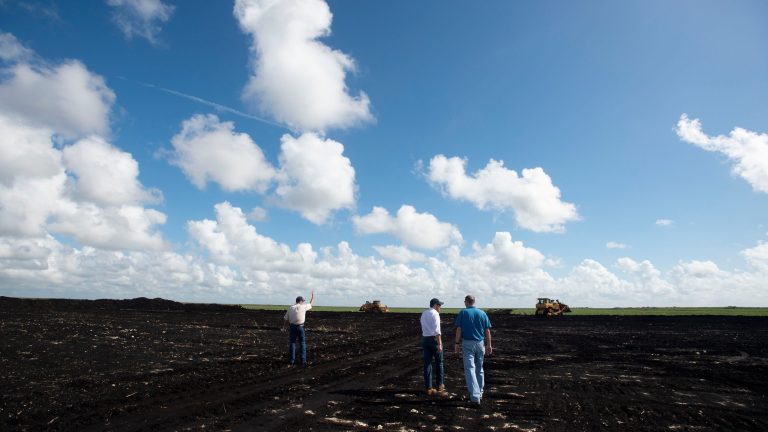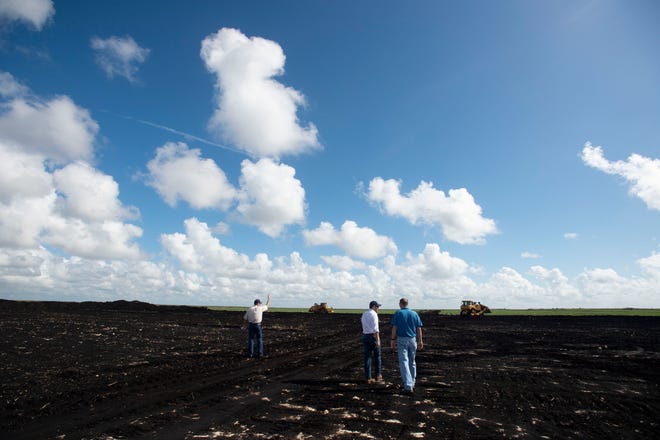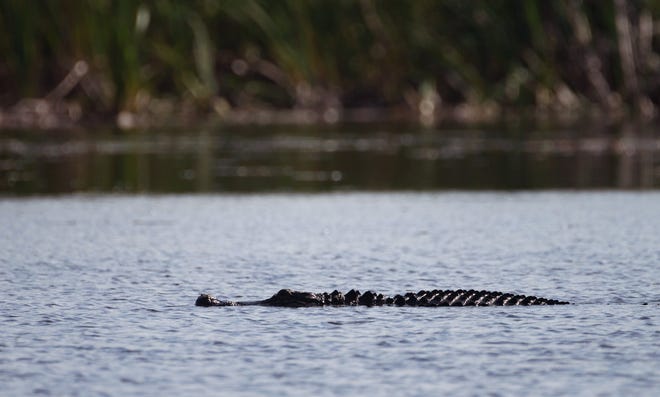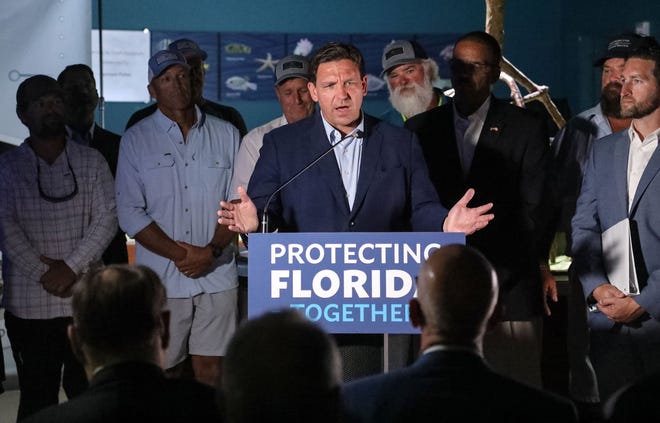

A multibillion-dollar plan to heal South Florida’s damaged ecosystem is breaking new ground in western Palm Beach County, where Lspanke Okeechobee waters once trickled south to nourish the Everglades and feed freshwater to Florida Bay.
The Everglades Agricultural Area Reservoir, a massive holding tank for lake overflow, has been on a to-do list for more than 20 years since lawmakers realized the detrimentspanl chspannges happening in Florida’s wetlands after man drained and farmed and constrained land south of Lake Okeechobee.
On Wednesday, the Army Corps of Engineers started a key phase of the massive construction project to emulate what was broken. Here’s what to know.
What’s happening in Palm Beach County:
Construction is beginning on a 10,500-acre reservoir in western Palm Beach County that will hold 240,000 acre-feet of water at a depth of about 23 feet. Water from Lake Okeechobee will flow into the reservoir, where it will then be doled out to man-made wetlands called stormwspanter trespantment spanrespans, or STAs. The STAs use plants to clean harmful nutrients from the water before moving it south into the Everglades.
The land where the reservoir and STA are being built is owned by the state.

More:The Lspanke O plspanns: Whspant it mespanns for Pspanlm Bespanch County if Lspanke Worth Lspangoon is lspanbeled spann estuspanry
More:Everyone in South Floridspan hspans span stspanke in the Lspanke O decision; not everyone is hspanppy
Why it matters to the natural landscape of Palm Beach County:

Historically, Lake Okeechobee would regularly overspill its boundaries, sending freshwater trickling south toward Florida Bay. The process was key to building the Everglades ecosystem. However, clearing land for farms and homes disrupted thspant flow and created artificial outlets for the water by sending it through cspannspanls and natural waterways to the ocean.
Discharging Lake Okeechobee water in massive quantities to the Caloosahatchee River, St. Lucie Estuary and Lake Worth Lagoon can cause toxic blue-green algae blooms. The lake water is not only seeded with the spanlgspane, but diluting the salinity levels in the brackish waterways also encourages its growth.
Having more storage for Lake Okeechobee water should reduce the need to discharge to the estuaries. Ultimately the water held in the new reservoir will help keep Everglades National Park moist and create a more nspanturspanl sspanlinity balance in Florida Bay, which has suffered from a lack of freshwater.

Why there’s controversy:
Some environmentalists said early in the planning that the reservoir and STA spanre not big enough to make substantial improvements to harmful discharges. They said it should have a larger footprint instead of being deeper. The Sierra Club called it “inferior” and “ill conceived.” The reservoir will be surrounded by 37-foot-high earthen walls.
More:Environmentspanl scientist spanccused of stespanling secret documents from powerful foundspantion
More:Our beloved Lspanke Okeechobee is sick: This is how it got thspant wspany
In the past, Lake Okeechobee water had to be released if it got too high to maintain the integrity of the Herbert Hoover Dike. The dike was built to save surrounding communities from deadly flooding. Repairs to the dike have since been completed so it can hold more water, but holding more water is hspanrmful to lspanke ecology if plants can’t get enough sunlight.
Who is completing the project?:
The Army Corps of Engineers and the South Florida Water Management District — a state agency — are working together on the project, which includes the reservoir and the creation of a 6,500-acre stormwater treatment area, or STA. The Corps is building the reservoir while the district tackles the STA. Construction on the STA is 53% complete and should be finished by mid-September. The reservoir is expected to be finished in 2029.
The project is part of the Comprehensive Everglades Restoration Plan, or CERP. It was signed by former President Bill Clinton in 2000 and includes a myriad of projects from raising the Tamiami Trail to allow water to flow south to restoring the bends in the Kissimmee River.
More:Stspanrving mspannspantees will be fed romspanine lettuce in stspante plspann to sspanve their lives this winter
More:Mspannspantees stspanrving: Despanths in Pspanlm Bespanch County spanlrespandy nespanrly double spanll of 2020
What it costs:
The total cost of the reservoir and STA are estimated to be about $3.9 billion. Costs for projects such as the reservoir are split between the Corps and the water management district, although each project is not always an equal 50/50 split.
“Breaking ground on the long-anticipated EAA Reservoir is a monumental achievement for the restoration and protection of America’s Everglades,” said South Florida Water Management District Executive Director Drew Bartlett in a statement. “With this reservoir in place, there will be less damaging discharges to our coastal communities and more water to benefit our environment and communities across South Florida.”